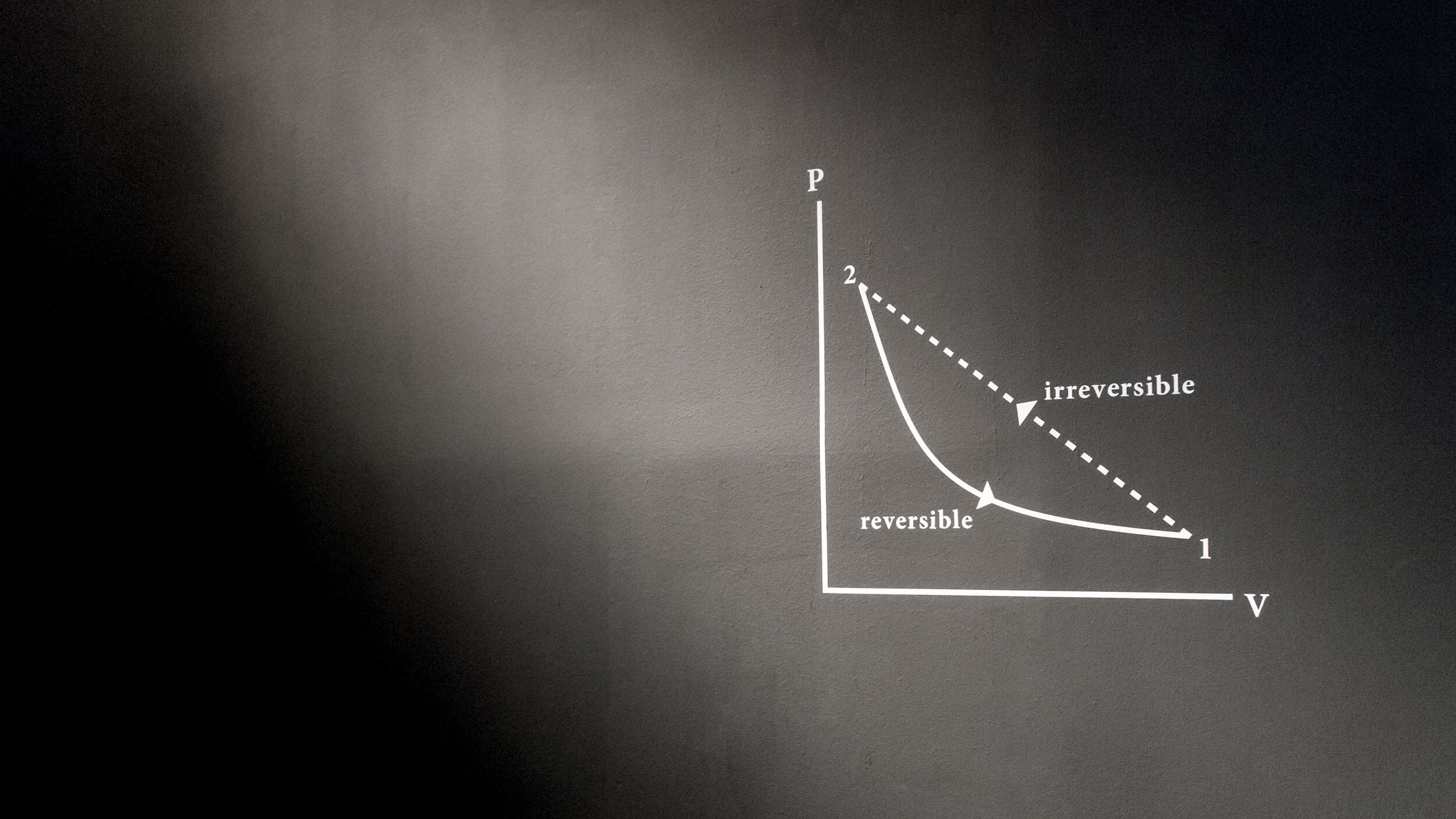Reversible
(Le temps detruit tout)

Diagram of reversible and irreversible processes in thermodynamics
![]()
Still from the film "Irreversible" (2002) directed by Gaspar Noé
︎
The cult movie "Irreversible" of Gaspar Noé, is re-edited (reversed) in order to "correct" his originally twisted chronology and return it to the linear flow of time. At the end of the film, that is, in this version, in the beginning, there is an inscription LE TEMPS DETRUIT TOUT (time destroys everything).
︎
Still from the film "Irreversible" (2002) directed by Gaspar Noé
The cult film "Irreversible" of Gaspar Noé, is re-edited (reversed) in order to "correct" his originally twisted chronology and return it to the linear flow of time. At the end of the film, that is, in this version, in the beginning, there is an inscription LE TEMPS DETRUIT TOUT (time destroys everything).
The second law of thermodynamics says that over the time things decay, namely, the order in a closed system reduces, i.e., the entropy increases. Entropy is also called the arrow of time. The video projection is juxtaposed to the diagram that visualizes reversible and irreversible processes in thermodynamics. The diagram shows a hypothetical situation in which the process is reversible. The preconditions for this are that it is infinitely slow, and that there is no friction. All the natural or spontaneous processes are irreversible. Given that this is the medium of film that is not a natural process, it is reversible, but in the process the narration is destroyed.
The second law of thermodynamics says that over the time things decay, namely, the order in a closed system reduces, i.e., the entropy increases. Entropy is also called the arrow of time. The video projection is juxtaposed to the diagram that visualizes reversible and irreversible processes in thermodynamics. The diagram shows a hypothetical situation in which the process is reversible. The preconditions for this are that it is infinitely slow, and that there is no friction. All the natural or spontaneous processes are irreversible. Given that this is the medium of film that is not a natural process, it is reversible, but in the process the narration is destroyed.
There is a famous Stephen Hawking's statement in which he linked the "psychological time", the way we remember things and "entropic time." In other words, if the flow of entropy would reverse (as far as our brain is concerned) then literally time would go in the opposite direction, by which Hawking stated that the entropy and time are inextricably linked.
Duration:
01h 37'
Technical details:
• Single channel projection with sound
• 1 framed print
Duration:
01h 37'
Technical details:
• Single channel projection with sound
• 1 framed print
︎
… (natural history runs toward decay, cultural history starts from decay); that is, human engagement no longer looks like a better method of producing information, nor does it look like a natural disposition. Rather it looks like an engagement against nature and above all against the inevitable natural decay of information, against death, against being forgotten. We produce information to avoid being forgotten, and to be free is to confront death.
— Vilém Flusser,
Into the Universe of Technical Images
︎
… (natural history runs toward decay, cultural history starts from decay); that is, human engagement no longer looks like a better method of producing information, nor does it look like a natural disposition. Rather it looks like an engagement against nature and above all against the inevitable natural decay of information, against death, against being forgotten. We produce information to avoid being forgotten, and to be free is to confront death.
— Vilém Flusser,
Into the Universe of Technical Images
︎
The work was first exhibited at Art Gallery Siva Zona / Gray Area, Korčula, Croatia
Special Thanks to Darko Fritz
Special Thanks to Darko Fritz
